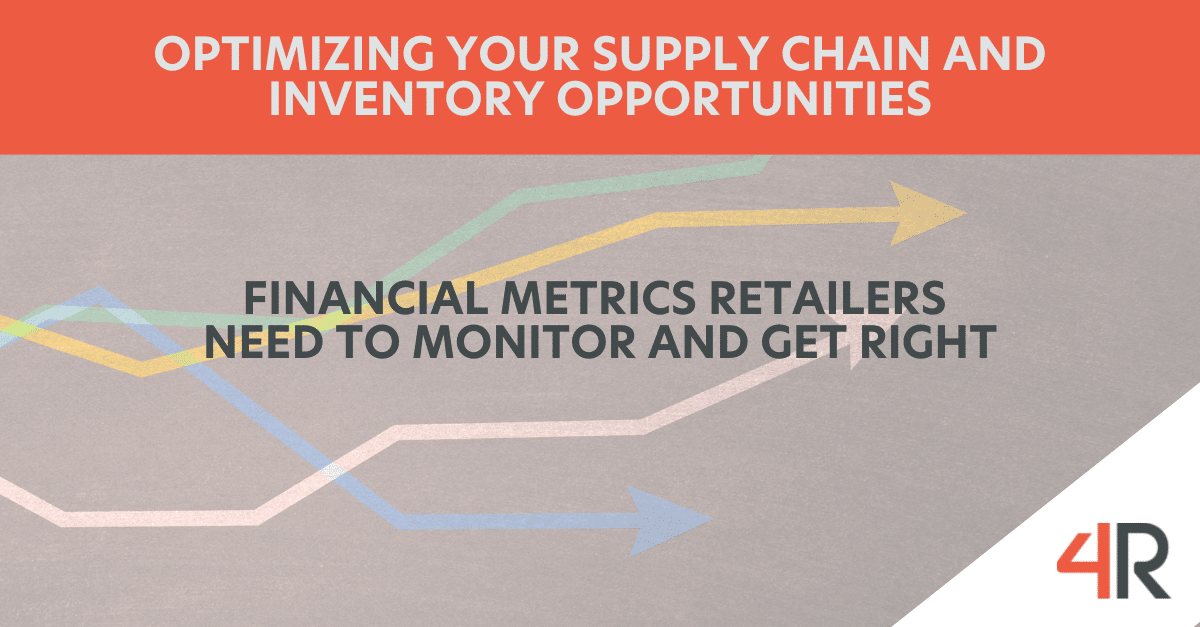Financial Metrics Retailers Need to Monitor and Get Right
Supply chain and inventory management is an ongoing process where retailers strive to improve efficiency, reduce costs and enhance customer satisfaction. Financial metrics can provide insights that are critical to monitor when improving productivity of your supply chain operations.
Supply chain and inventory management has been shaped by a wide range of recent trends and developments which can improve forecasting, real-time visibility, stock-out-rate, order fulfillment cycle time, return rate, and other metrics. With better demand forecasting and planning comes improved company financial performance.
Example trends cited which are shaping the landscape of supply chain and inventory optimization often include:
- Advanced Technologies: Artificial intelligence, machine learning, and demand sensing (IOT) technologies can all play an important role.
- Digitization: Automated systems which integrate key supply chain processes, thus increasing insights, communication and collaboration between internal team members and supply chain partners.
- Data Analytics: Software that enables the handling of large volumes of data to identify patterns, trends and supply chain inefficiencies.
Our perspective is that implementation initiatives aimed at improving supply chain performance must include a streamlined way to monitor, measure and course correct for critical financial metrics. Retailers leveraging supply chain management technology should be able to translate initiative investment to impact on key financial metrics such as: Net operating profits, gross margin return on investment, transaction sizes, customer counts, and payroll expenses.
- Net Operating Profits: Automation of manual tasks can streamline retailer operations, reducing the need for repetitive and time-consuming manual tasks. This efficiency improvement translates into lower operational costs, ultimately contributing to increased net operating profits.
- Gross Margin Return on Investment (GMROI): Predictive analytics optimize inventory levels, fill rates, and replenishment strategies. This leads to a higher turnover of inventory. With faster-moving inventory, retailers can achieve a higher GMROI by maximizing sales revenue relative to the investment in inventory.
- Transaction Size: Through advanced data analytics having the right products, right price, right location, retailers can identify the optimal product assortment, pricing strategies, and optimized inventory levels. By ensuring that customers find the products they need at competitive prices and in convenient locations, retailers can increase the average value of each transaction.
- Customer Counts, Acquisition and Retention Rates: Data-driven insights enable retailers to implement targeted marketing and promotional campaigns aimed at acquiring and retaining customers. By understanding customer preferences and behavior patterns, retailers can tailor their offerings and experiences to attract new customers while nurturing relationships with existing ones, ultimately driving customer counts higher.
- Payroll Expenses: By automating repetitive and manual tasks such as inventory management and replenishment, staff time that can be freed up and redirected towards more high-value tasks or strategic projects. This optimization of labor resources allows retailers to minimize payroll expenses while maintaining operational efficiency.
Why is this a critical issue?
Without the ability to connect supply chain management investments to critical company financial metrics, investments and sponsorship can lag. Technology implementations need to empower retailers to enhance their supply chain performance, providing outcomes that can be measured against key company financial metrics.


